Education as embedded in the constitution of Kenya is every child’s right. The illiteracy levels have played a major role in the underdevelopment of communities here. With education, the communities could create a way out of poverty, but many challenges prevent them from this.
The pastoralist nature of the communities as well as their culture are the major contributions of poor education. Frequent resettlement in search of greener pasture and water makes it difficult for children to formally access the Kenyan stationary and secular education system. Enrollment of school kids gets to as low as 2%. School age children are also part of the herders leading to many dropouts. Girls are married off while still at school age contributing further to dropouts. Part of their culture also prevents girls from going to school to perform household duties and prepare for marriage.
Being a largely marginalized area of the country, infrastructure and skills are poor. Harsh weather conditions, conflict and poor infrastructure have created a shortage of professionals from the education sector as most are unwilling to practice in the area. Classrooms are poorly constructed or very old and neglected, and do little to prevent strong winds, dust and the scorching sun, creating a dreadful learning environment for those who can make it to school. Schools also lack sanitary facilities.
Poverty has made the direct costs of sending children to school unbearable for many parents. With livestock being the main source of livelihood for most residents, severe droughts have caused the loss of many animals, threatening the welfare of many households. Young girls who cannot afford sanitary towels skip school for fear of embarrassment.
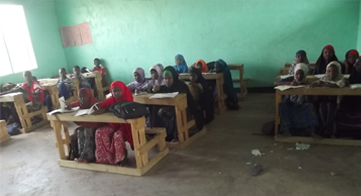
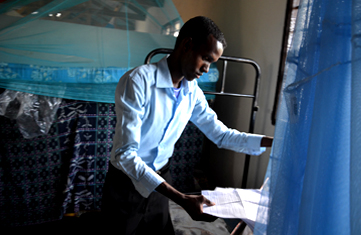
RRDO along with its partners and sponsors have intervened by providing stringent and practically sustainable solutions through numerous projects. Some of the recent projects include
Welhaar Primary School
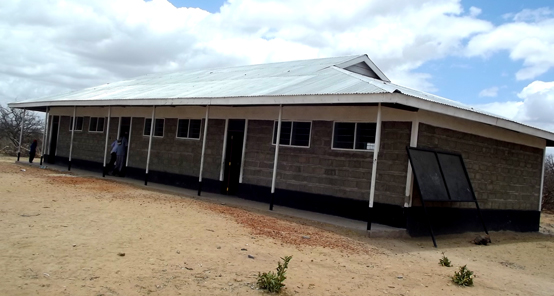
Having began 4 years ago (2009), Welhaar is situated 36kms from Dadaab township. It has approximately 160 households and a population of 1,920 people 720 of whom are men and 1,200 women.
In the beginning of the year 2012, there was no any educational structure within the settlement despite the fact that the village had approximately 700 school going children.
With support from UNHCR, RRDO constructed a 3 class roomed school and equipped them with the 120 desks (i.e 30 desks per classroom). This facility led to an increase in the enrolment of 60 pupils to the school.
Dadaab Secondary School Dormitory
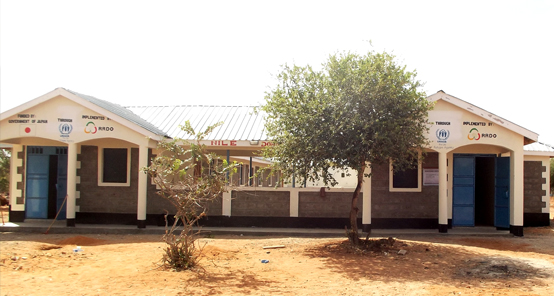
Dadaab Secondary School was established in 1998 and now hosts 420 students (353 boys and 67 girls). It has 20 teachers, 14 classrooms, 4 dormitories and a dining hall. There are also 6 latrines that serve the teachers and student population.
The school has had a challenge with regard to the accommodation facilities of the students. Some students use the nearby mosque as part of their accommodation while some of the existing accommodation facilities are dilapidated.
With support from UNHCR, RRDO constructed a modern dormitory which can accommodate 80 students. The dormitory was equipped with 80 beds with mattresses and facilitated with power. There are two main entrances as well as two main safety exit doors. There are 6 bathrooms for each wing of 40 rooms, a washing facility and an open area where the students can use to dry their clothes after washing. Other facilities that were constructed include the caretaker’s room and a store.
Daidai Primary School
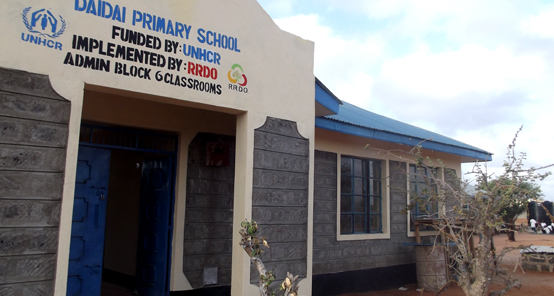
Bulladaidai is situated at the outskirts of Dadaab Township. In 2011, the school had no teacher’s office and had only 3 classrooms and student population of 150. This inadequacy had limited additional enrollment as well as overall performance of the school.
RRDO with support from UNHCR constructed a 4 roomed administration block and 6 classrooms at the school each of which was equipped with 25 desks. Two units of latrines were also constructed, one for boys and the other for girls. The construction of these facilities has seen an increased enrollment from 150 students in 2011 to the current student population of 280(180 boys and 100 boys).
Maleyley Primary School
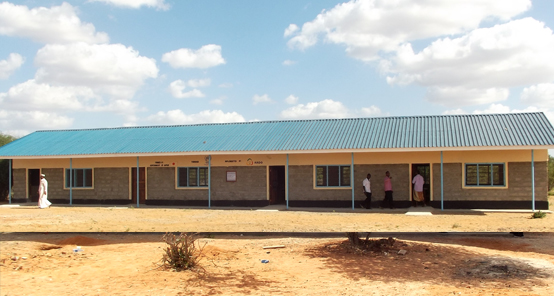
With an approximated 350 persons in need of access to education, RRDO with support from UNHCR constructed 4 classrooms with capable of holding 35 students each. The project was carried out between May and October 2013. Each of the constructed classrooms is equipped with desks
Maleyley is a 3 year old settlement that is located 31kms from Dadaab and made up of 180 households and a population of 1,100 people (350 men and 750 women). This settlement has a challenge with regard to health access. Similarly, the settlement has approximately 350 school going population which require educational facilities to enhance access to education. With support from UNHCR, RRDO constructed 4 classrooms with a capacity of 30 students each between the Months of May to October 2013. The classrooms are well designed with proper ventilation through several timber framed wide windows and coffee tray with wire mesh.








